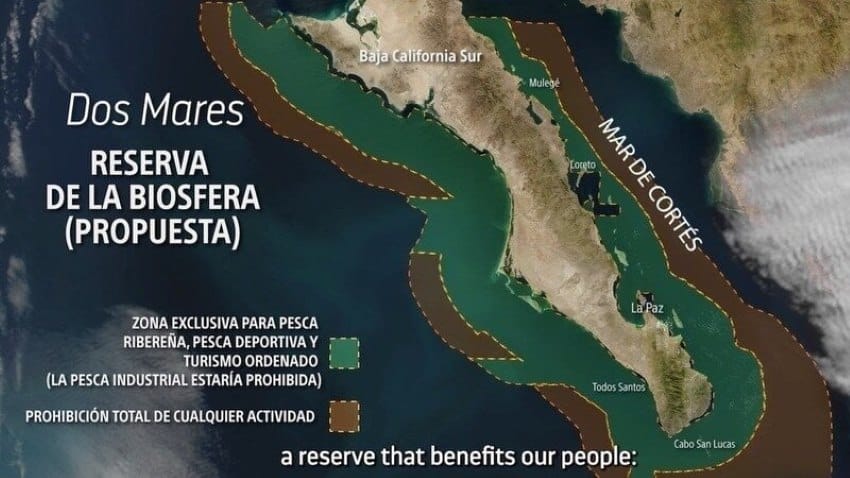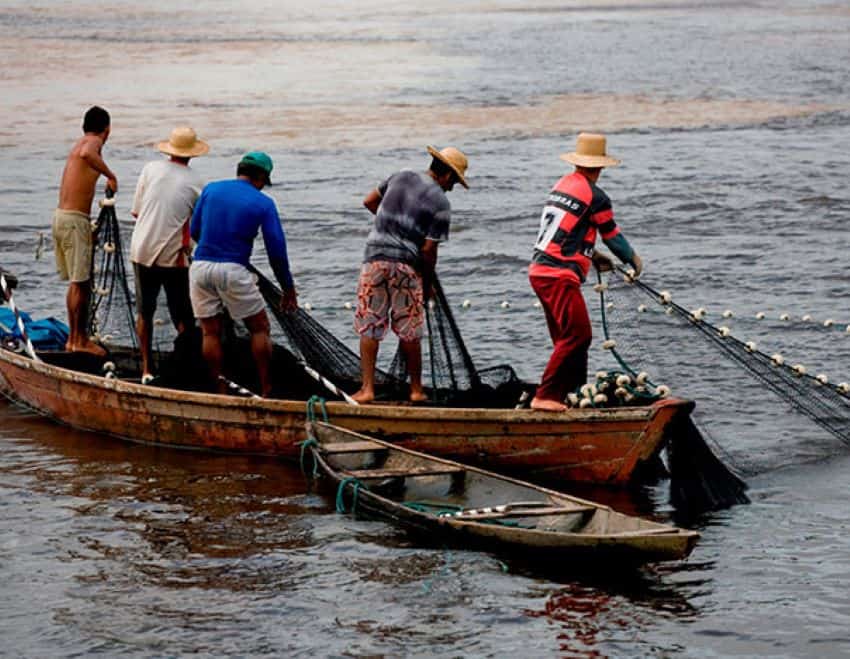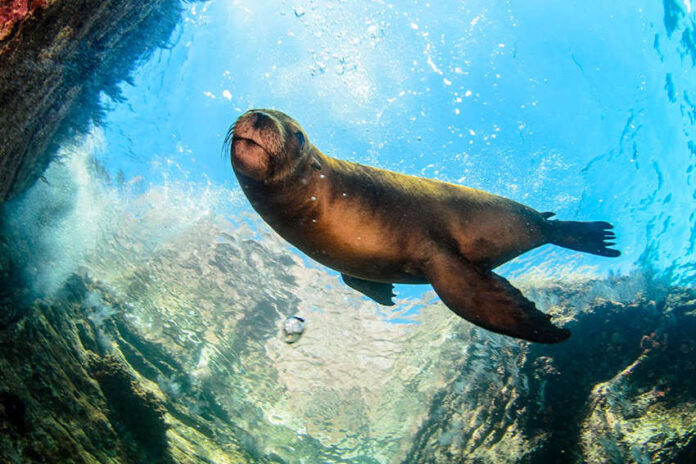A coalition of environmental groups and local fishermen is continuing its push for the creation of a new Marine Protected Area off the coast of Baja California Sur (BCS), aiming to conserve marine ecosystems and support sustainable fishing practices.
The proposed Dos Mares (Two Seas) Biosphere Reserve would cover approximately 192,000 square kilometers, stretching from the BCS coastline to 50 miles offshore in both the Pacific Ocean and the southern Gulf of California (aka, the Sea of Cortés).

Proponents say the reserve would help Mexico meet international conservation commitments while protecting local livelihoods.
“This is not our project. It is a project of the people,” Gabriela Gómez, director of the Fund for the Conservation of the Seas (FOMARES), said this week in the news magazine Expansíón ESG.
The plan was developed by DEPESCA, a 2-year-old marine association in BCS whose name is likely derived from desarrollo pesquero (fisheries development).
“In our state, what we have called a ‘Coastal Wave’ has formed,” DEPESCA writes on its website. “This is an unprecedented event, since for the first time artisanal and sport fishermen, aquaculturists and nautical tourism service providers are joining forces to defend our marine heritage.”
Dos Mares supporters argue the reserve would benefit the region economically. According to the La Paz newspaper El Sudcaliforniano, a study by researchers at the Colegio de México projected the MPA could lead to a 7.68% increase in real income for the local economy, driven by increased tourism and improved fishing productivity.
However, the proposal faces opposition from some coastal fishing communities. Tomás Camacho, president of the Puerto Chale Fishing Cooperative Society, expressed concern that the reserve could impose additional restrictions on traditional fishing practices.

“They tell us the same thing as always, that shrimp boats will not be able to enter and that the Don Diego Mine will be off-limits too,” Camacho told El Sudcaliforniano.
Don Diego is a proposed underwater, phosphate dredging project about 40 kilometers off the BCS coast that was denied environmental permits twice, in 2016 and 2018, by Mexico’s environmental agency, SEMARNAT. Five months ago, the company behind the project, Odyssey Marine Exploration, won a judgment of more than US $37.1 million against the Mexico government from the International Centre for Settlement of Investment Disputes, though Mexican authorities defend their decisions to withdraw the permits based on environmental concerns and vowed to fight the ruling.
Proponents of Dos Mares say it would help preserve biodiversity and support migratory species by creating corridors connecting existing protected areas.
Launched in mid-2023, the project is still in the proposal and advocacy stage. Current efforts are focused on gaining support from local communities, government officials and other stakeholders.
The proposed reserve would potentially increase Mexico’s marine protected areas from 5% to 12% of the nation’s Exclusive Economic Zone, a 3.27-million-kilometer maritime area (ranked the thirteenth largest in the world) that contributes significantly to the country’s territory and resources.
Advocates are hoping that President Claudia Sheinbaum’s background in sustainable development may positively influence the project’s prospects.
With reports from Expansíon ESG and El Sudcaliforniano
